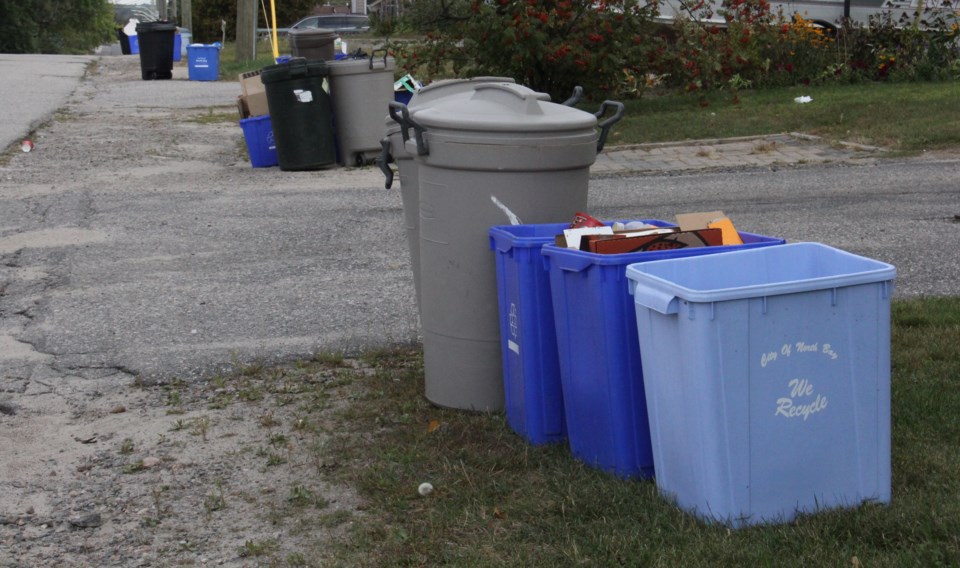Ontario wants to improve recycling across the province and address the serious problem of plastic pollution and litter.
Today, Jeff Yurek, Minister of the Environment announced the next steps to transition the costs of the Blue Box Program away from municipal taxpayers and make the producers of products and packaging fully responsible.
"Transitioning the Blue Box Program to full producer responsibility will promote innovation and increase Ontario's recycling rates while saving taxpayers money," said Yurek. "This shift is a big step towards diverting waste, addressing plastic pollution and creating a new recycling economy that everyone can be proud of in Ontario."
Over the coming year, Ontario will develop and consult on regulations to support the new producer responsibility framework for the Blue Box Program. Once producer responsibility is fully in place, recycling across the province will be more consistent, with a standard list of materials that can be recycled.
Based on recommendations from Special Advisor David Lindsay's report on Recycling and Plastic Waste, the Blue Box Program will transition to producer responsibility in phases over a three-year period.
"When producers – the companies that design, create, and market products and packaging – are responsible for diverting the waste from their goods, they have incentives to redesign their products, make them easier to recycle, and use more recyclable materials. Producers can reintegrate these wastes into new products from reliable streams of recovered materials," according to the report.
The first group of municipalities or First Nations will transfer responsibility of their programs to producers starting January 1, 2023. By December 31, 2025, producers will be fully responsible for providing blue box services provincewide.
"The Blue Box Program will continue to be convenient and accessible for the people of Ontario," says a news release. "Residents who currently receive municipal blue box services will continue to receive the same services throughout the transition period. Once producers are fully responsible for the program, Ontarians will experience the same or improved access to blue box services across the province."
One of the recommendations is standardizing what’s in the blue box, making it easier for Ontarians to understand what’s recyclable and what’s not. A common collection system should have a standard list of materials.
Recommendations include:
- Regulations should make producers responsible for all printed paper and packaging they put into the market by setting clear goals for diversion from landfill, but they should provide flexibility for producers to identify the best way to achieve these goals.
- Regulations should establish a standard list of blue box materials that must be collected through blue boxes across Ontario, and also allow producers to use other methods to meet or supplement diversion requirements.
- Regulations should establish a transparent process that will allow producers to change which materials are collected in the blue box versus other methods.
- Producers should be encouraged to use other methods to divert materials that cannot be recycled by the blue box or that might contaminate collected materials.
"This is an important step forward in the evolution of Ontario's iconic blue box," says Associated Municipalities of Ontario.presidents and mayor of Parry Sound Jamie McGarvey. "It puts the responsibility for recycling on those that have the greatest ability to make change – the producers. Residents may not see a big difference at the curb, but it will make a difference for our environment, spur more innovation and importantly, lower costs for taxpayers."
The expectation is that residents will see a similar collection system, but with more items being collected and a standardized program being offered across the Province that will limit confusion and result in better performance.
“We know that Nipissing and communities throughout Ontario have been doing their part to reduce and divert waste from landfills and keep our province clean and free of litter,” said Nipissing MPP Viv Fedeli. “We also know that this transition is needed to improve our province’s overall waste diversion rate and reduce waste going to landfills.”
Ontario’s recycling rates have been stalled for 15 years and up to 30 per cent of what is put into the blue box is sent to landfill.
There are over 240 municipal blue box programs that have their own separate lists of accepted recyclable materials, which affects cost savings and contamination.
- Read the Special Advisor on Recycling and Plastic Waste report
- Read the minister’s direction letter for the Blue Box Program
- Read the Made-in-Ontario Environment Plan
- Read the Waste Discussion Paper
Based on 2017 costs, once full producer responsibility is in effect, Ontario's municipalities will save a total of about $125-175 million annually.



